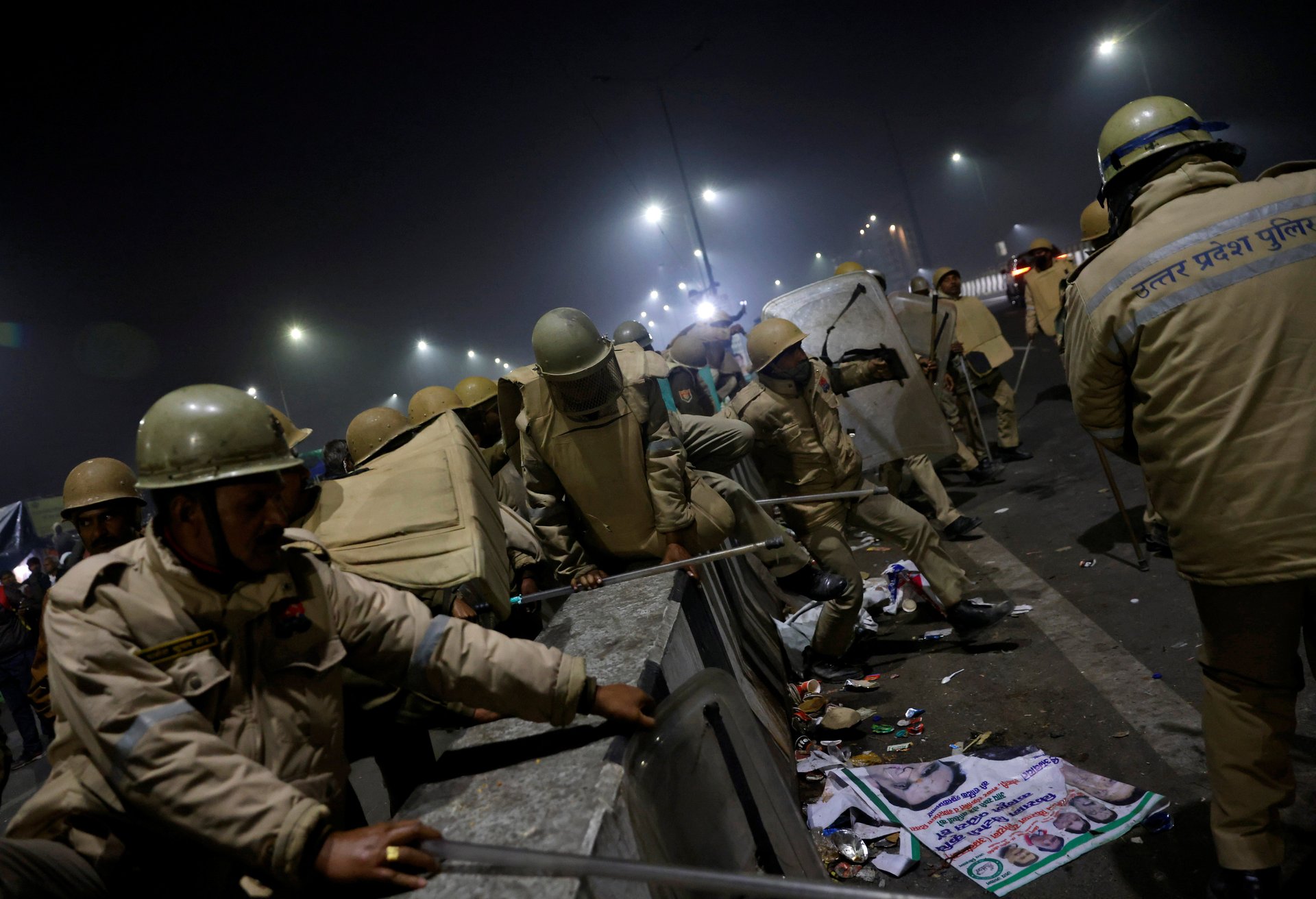A timeline of the months-long farmer protests in India
The borders of India’s national capital are buzzing with increased police forces to prepare for a crackdown against farmers protesting three new farm laws introduced by the Narendra Modi government.
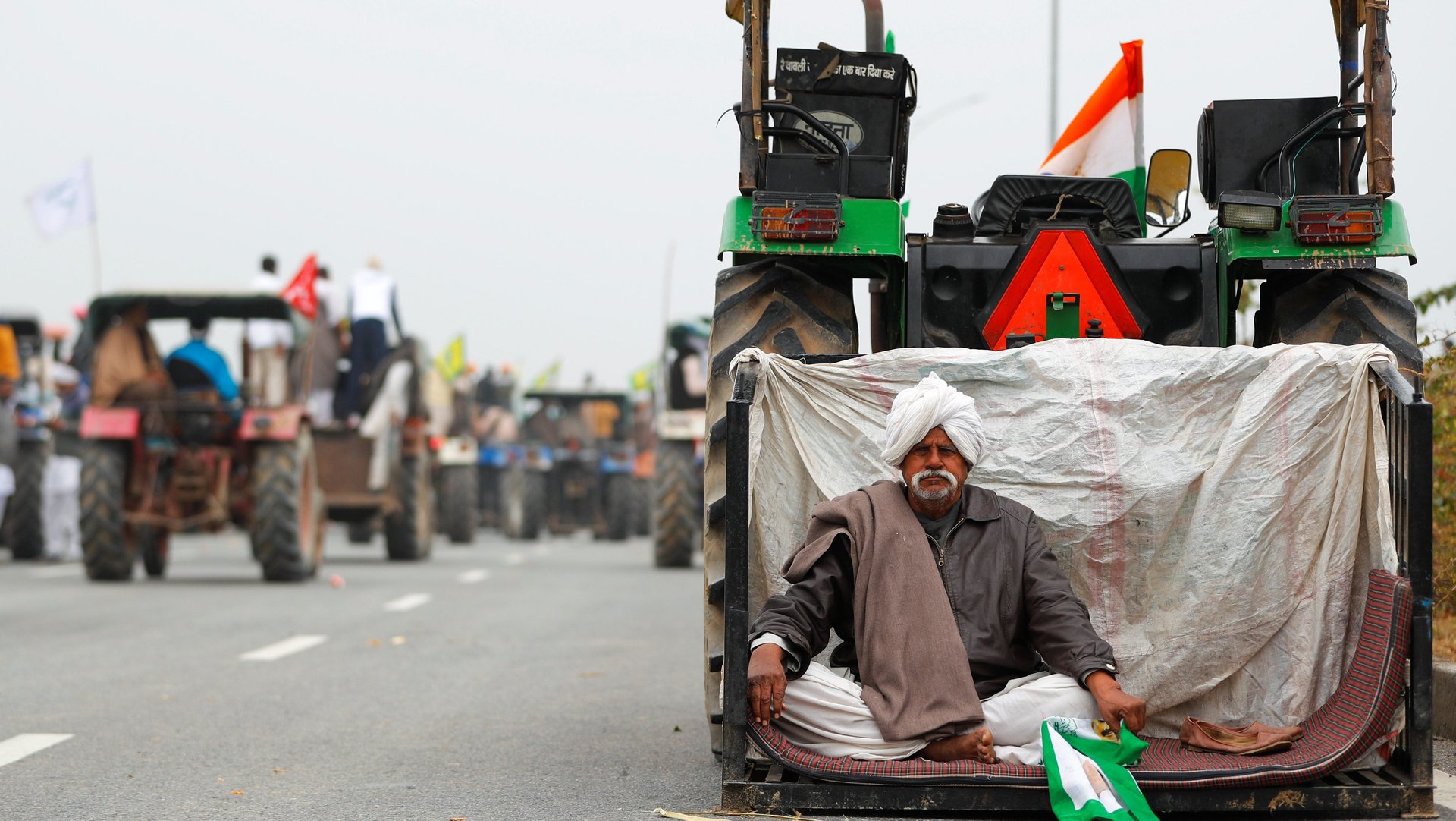

The borders of India’s national capital are buzzing with increased police forces to prepare for a crackdown against farmers protesting three new farm laws introduced by the Narendra Modi government.
The heightened security comes days after a farmers’ rally in Delhi resulted in violence, including a group of protestors storming the historic Red Fort on Jan. 26.
But while the images of violence during the Delhi rally—including those of a khalsa flag hoisted on Red Fort—flood social media, they must not overshadow scenes of peaceful protests by farmers who have battled a fierce winter along the borders of the capital city for over two months now.
Here’s a look back at what has happened in the tussle between the Modi government and the farmers so far:
Nov. 5: More than 200 farm unions from 22 states organise a nationwide road blockade against new laws introduced by the Modi government that relaxes restrictions governing the purchase and sale of farm produce, eases out constraints on stocking, and enables contract farming.
Nov. 25: After a series of local protests, farmers from Punjab and Haryana decide to move their protests to the capital city. They make a “Delhi Chalo” (let’s go to Delhi) march call.
Nov. 26: The police at Haryana’s Ambala district uses water cannons and tear gas to stop farmers from reaching Delhi. Reports say the Haryana government has dug trenches on the roads leading to Delhi as part of their efforts to stop farmers from travelling to the capital.
Nov. 27: Farmers set up camps on the highways on the city’s border, in defiance of the police permission for the protest at a site in Delhi’s Burari.
Nov. 28: Home minister Amit Shah offers to hold talks with the farmers as soon as they vacate Delhi borders and move to the designated protest site in Burari. Rejecting his offer, the protesting farmers demand to hold the protest at Delhi’s Jantar Mantar.
Dec. 1: The Modi government holds the first round of talks with leaders of 35 farm unions. The meeting remains inconclusive.
Canadian prime minister Justin Trudeau describes the situation as “concerning.”
Dec. 2: Modi government slams Trudeau’s “unwarranted” comments.
Dec. 3: A marathon eight-hour meeting between the government and farmer union heads ends in a deadlock.
Dec. 4: The protests grab attention for their efficiency and preparedness for the long haul. Farmers claim they have enough arrangements to sit at Delhi’s borders indefinitely. Many protestors have tractors installed with air conditioners and heaters to brave the weather.
Dec. 5: Trudeau invokes the farmers’ protest again and says he will always “stand up for the right of peaceful protest.”
Dec. 8: Protesting farmers call for a nationwide shutdown and demand a complete rollback of the new farm laws. The shutdown gathers support from many opposition parties and trade unions, especially in Punjab and Haryana. A meeting between home minister Shah and a selected group of farmers’ representatives fails to achieve a breakthrough.
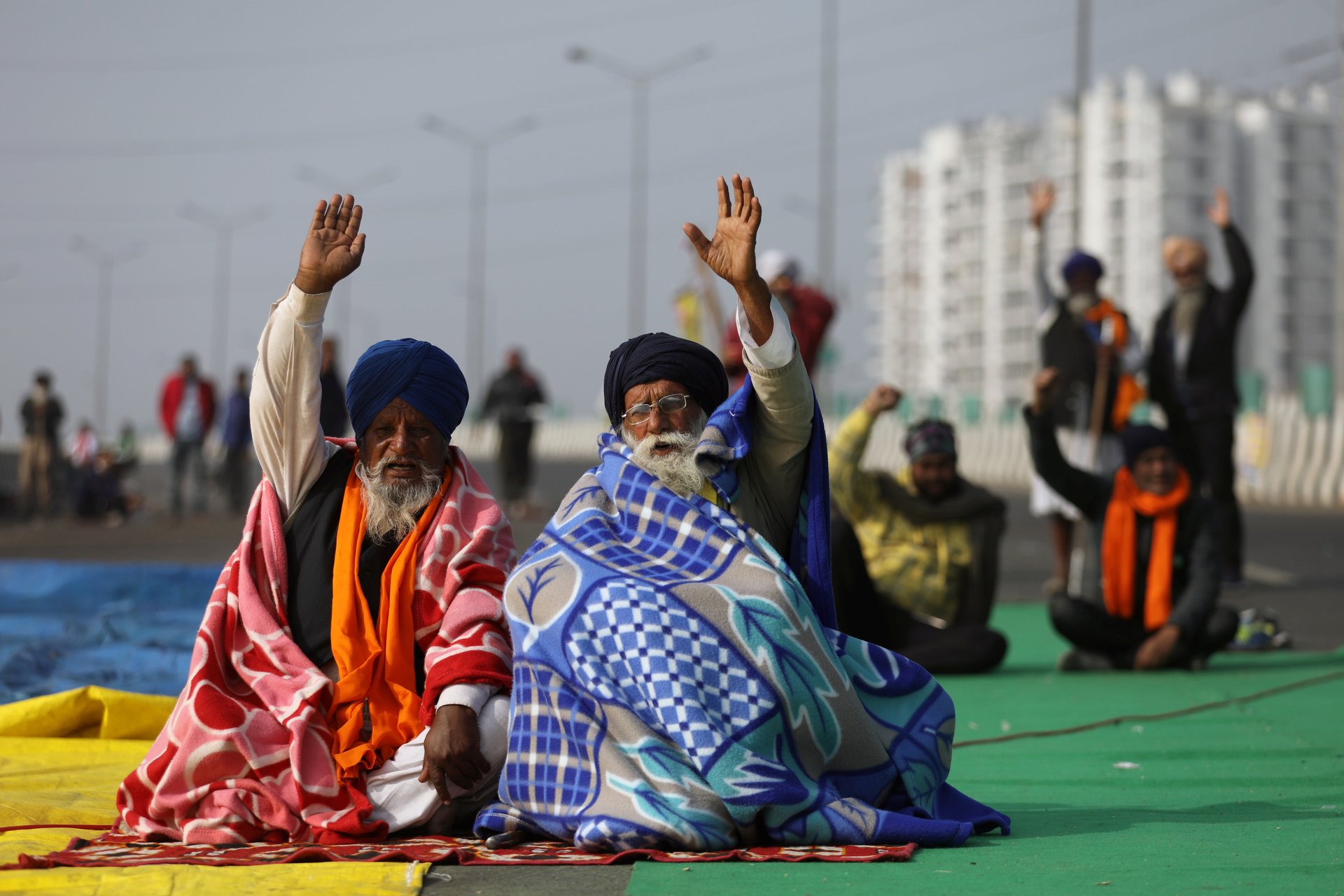
To keep protestors motivated, farmers make arrangements for movie viewing at the protesting sites.
Dec. 9: Leaders of farmer unions boycott services offered by industrialists Gautam Adani and Mukesh Ambani saying the new farm laws favour large corporates.
Dec. 11: Bharatiya Kisan Union, one of the farmer bodies, moves the supreme court against the three farm laws.
Dec. 16: The apex court suggests that the centre put the new farm laws on hold while putting forward the idea of constituting an impartial and independent committee to end the impasse.
Dec. 21: Farmers hold a one-day hunger strike at protest sites near Delhi borders.
Dec. 22: More than 35 social, political, farmer organisations, and trade and labour unions hold a peaceful protest in Mumbai to show their support.
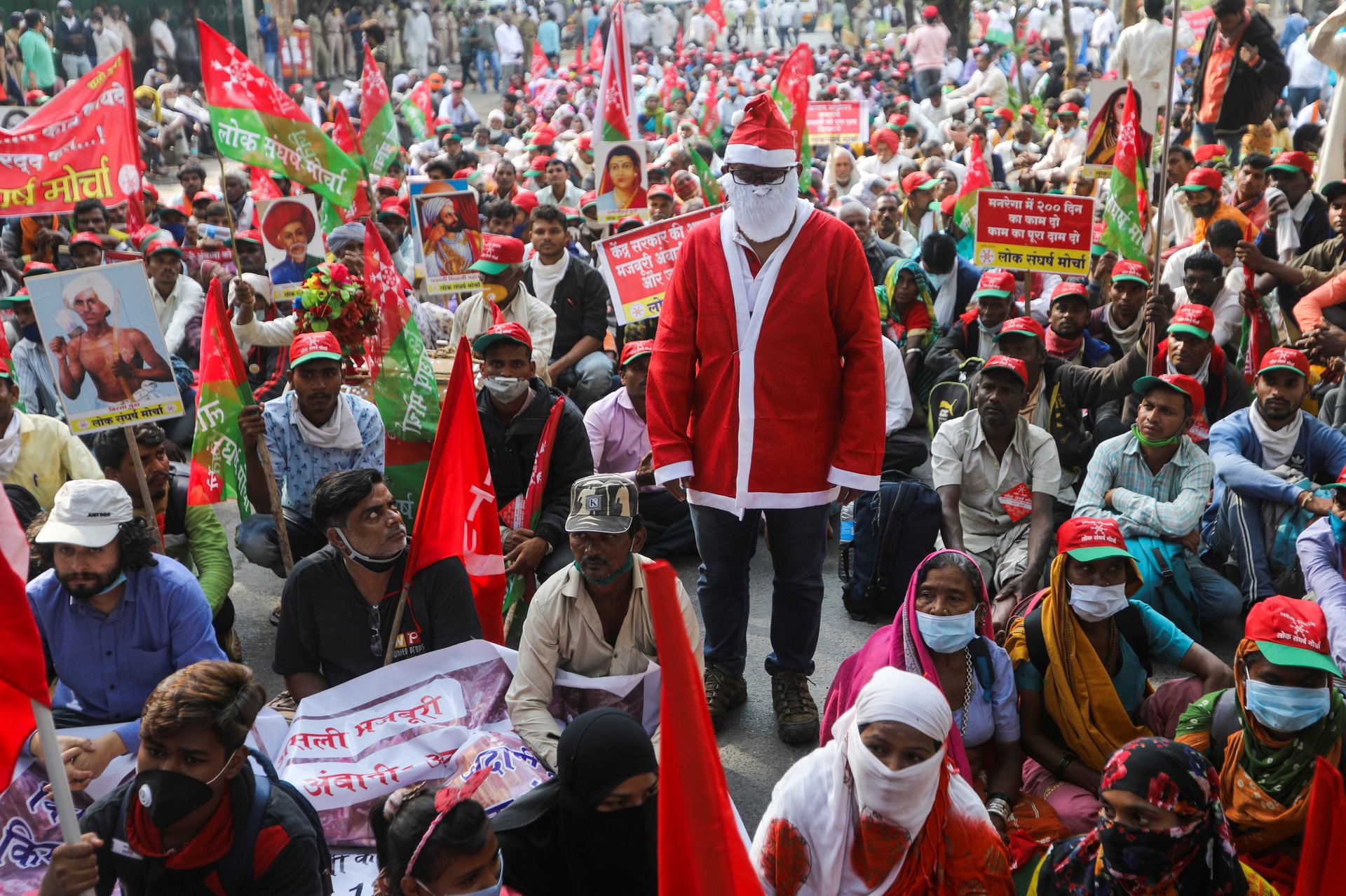
Dec. 30: Some headway is made in a fresh round of talks between the government and union leaders when the former agrees to drop the penal provisions against farmers in an ordinance relating to stubble burning and to put on hold a proposed electricity amendment law.
Jan. 4: Reliance Industries, owned by India’s richest person Mukesh Ambani, says it will never enter contract farming.
A fresh meeting between the farmers and the government ends without a solution as the union leaders continue to press for the withdrawal of the three farm laws.
Jan. 11: The supreme court questions the centre over its handling of the farmers’ protest.
Jan. 12: The supreme court puts on hold the implementation of the three farm laws and sets up a committee to evaluate any changes to the laws. The committee is given a two-month deadline.
Jan. 15: Another round of talks between the farmers and the government fails to end the deadlock.
Jan. 20: In a fresh round of talks, the Modi government proposes to suspend the three farm laws for one-and-half years and set up a joint committee to discuss the legislation. The farmers, however, reject the proposal and continue their demand for a complete rollback of the laws.
Jan. 22: The government hardens its stand and says the next round of talks will be held only when the farmers agree to discuss the suspension proposal.
Jan. 24: The Delhi police allows farmers to hold a tractor rally in the national capital to mark the completion of two months of their protest. The permission is limited to a fixed route through the city.
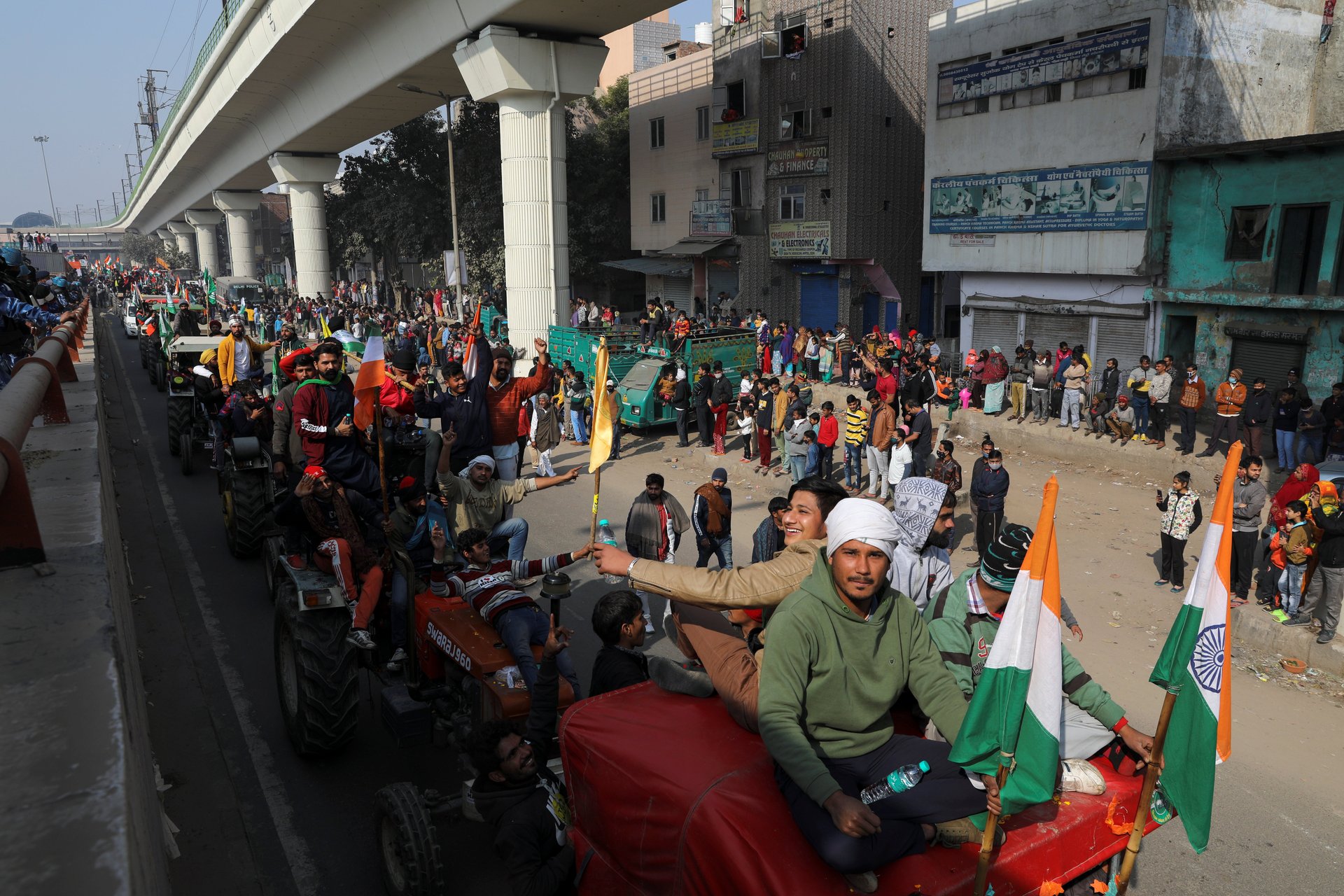
Jan. 26: Chaos unfolds when a group of farmers divert from the permitted route. In an attempt to stop the farmers, the police use tear gas but the situation turns violent after some farmers allegedly pelt stones at them.
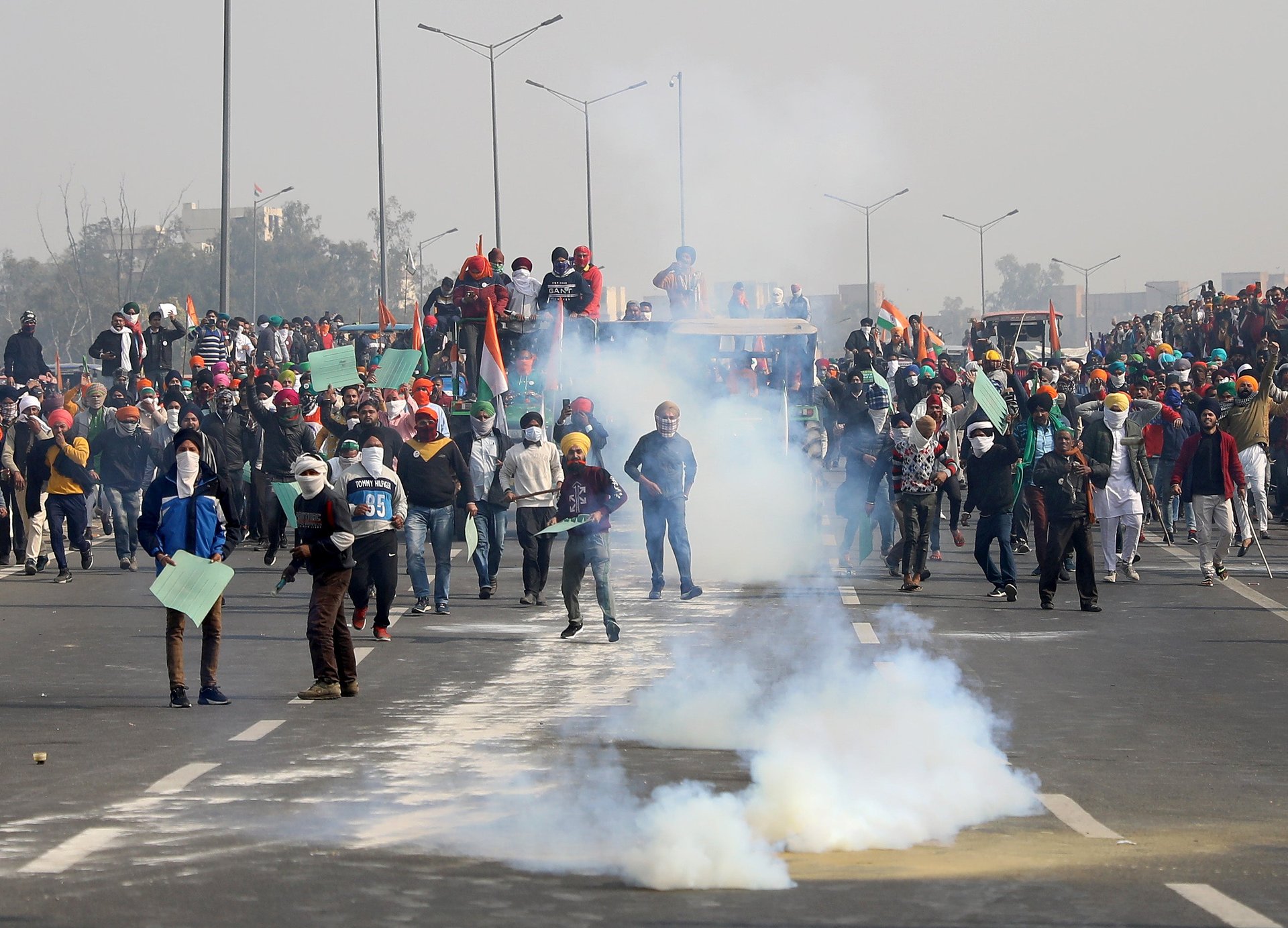
Protesting farmers vandalise a bus and police vehicles, and break the barricades at Delhi’s ITO.
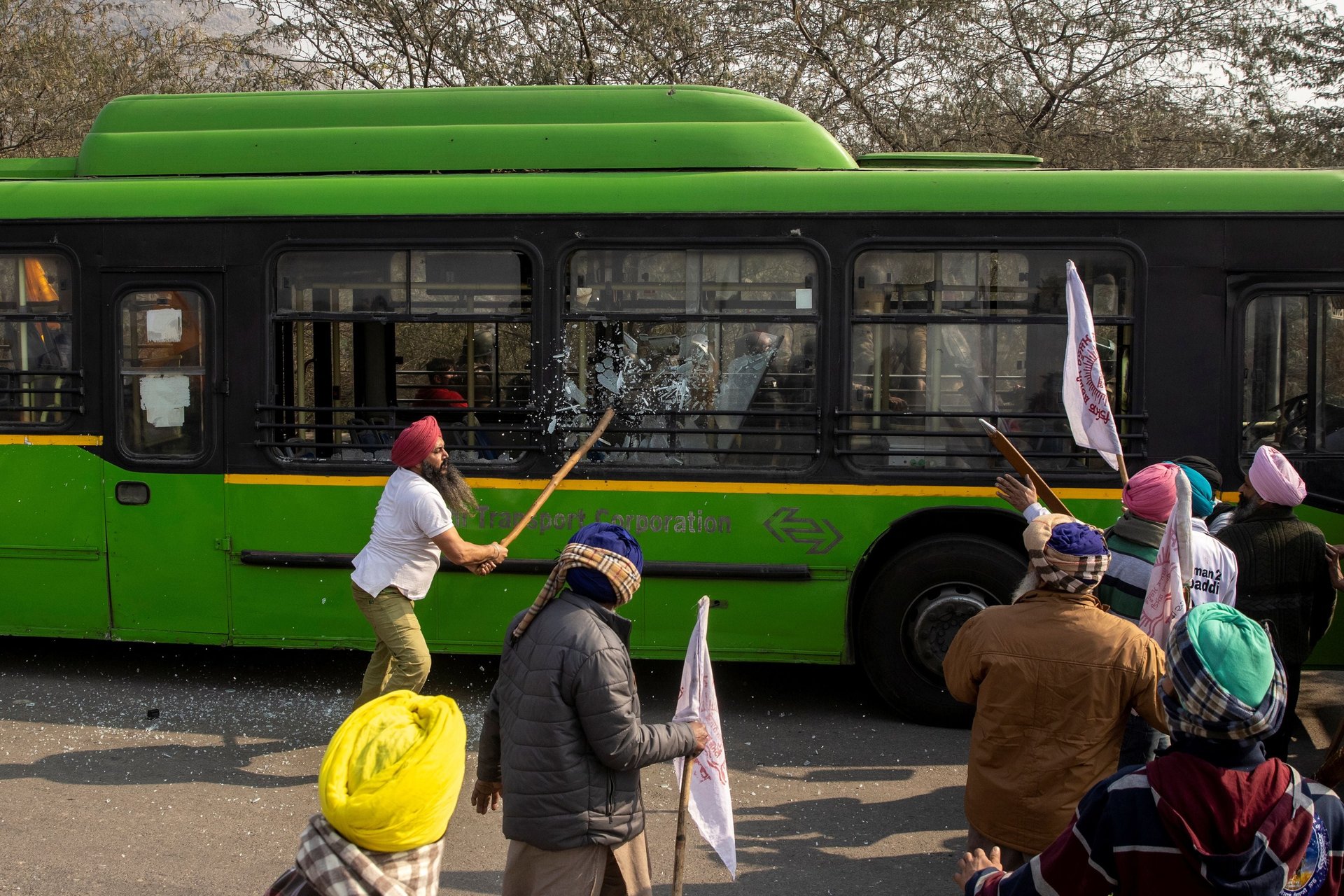
One protesting farmer dies in the violence. The farmers alleged that he was shot at by the Delhi police. However, the police deny the allegation and claim that the man died after his tractor was toppled while he was trying to break through the barricades.
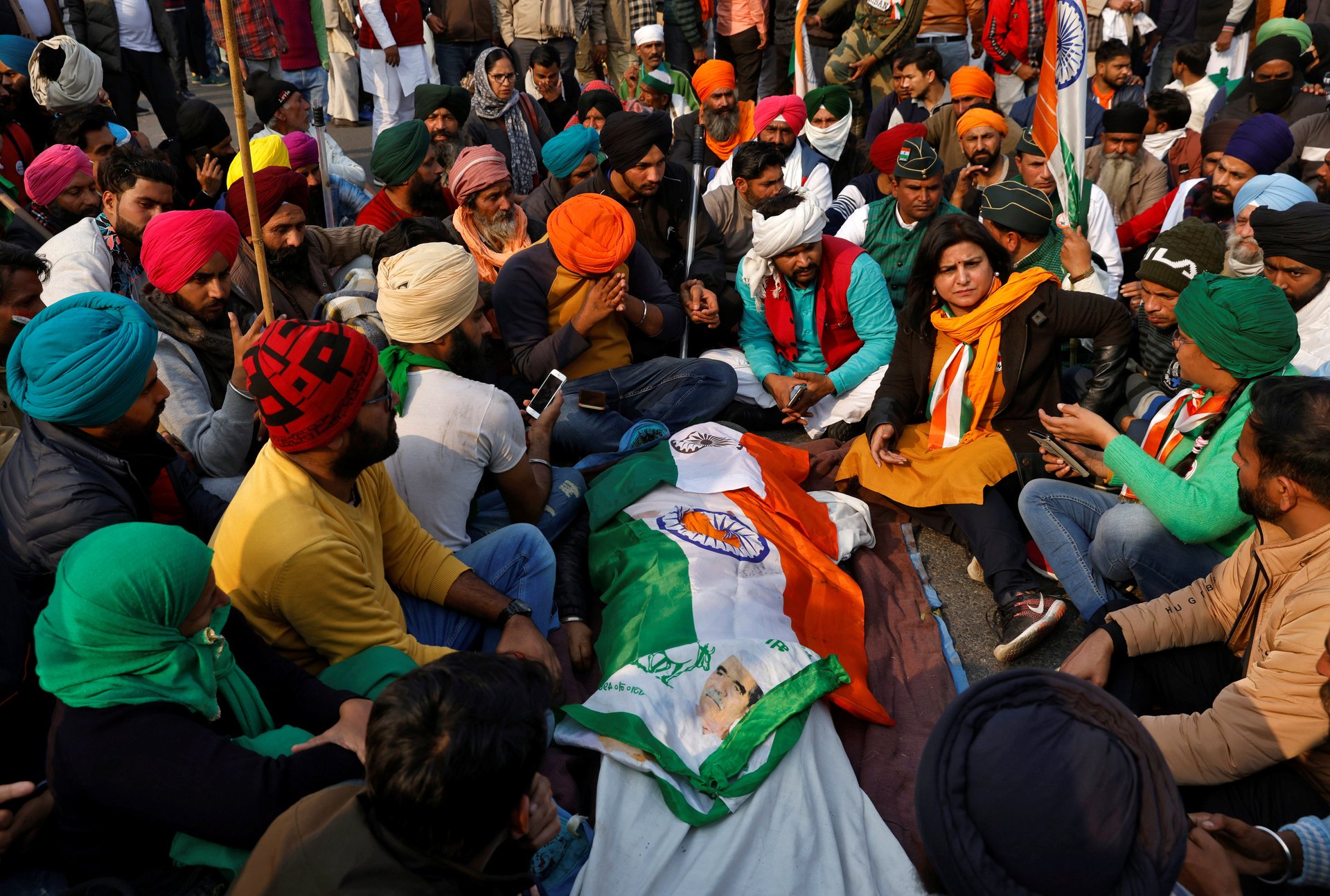
Violence intensifies after a group of protestors reach the Red Fort and breach the monument’s security. The protesting farmers wave flags from the ramparts of the fort. While some wave their farmers’ union flags, others hoist the Nishan Sahib flag, which is sacred to the Sikh community.
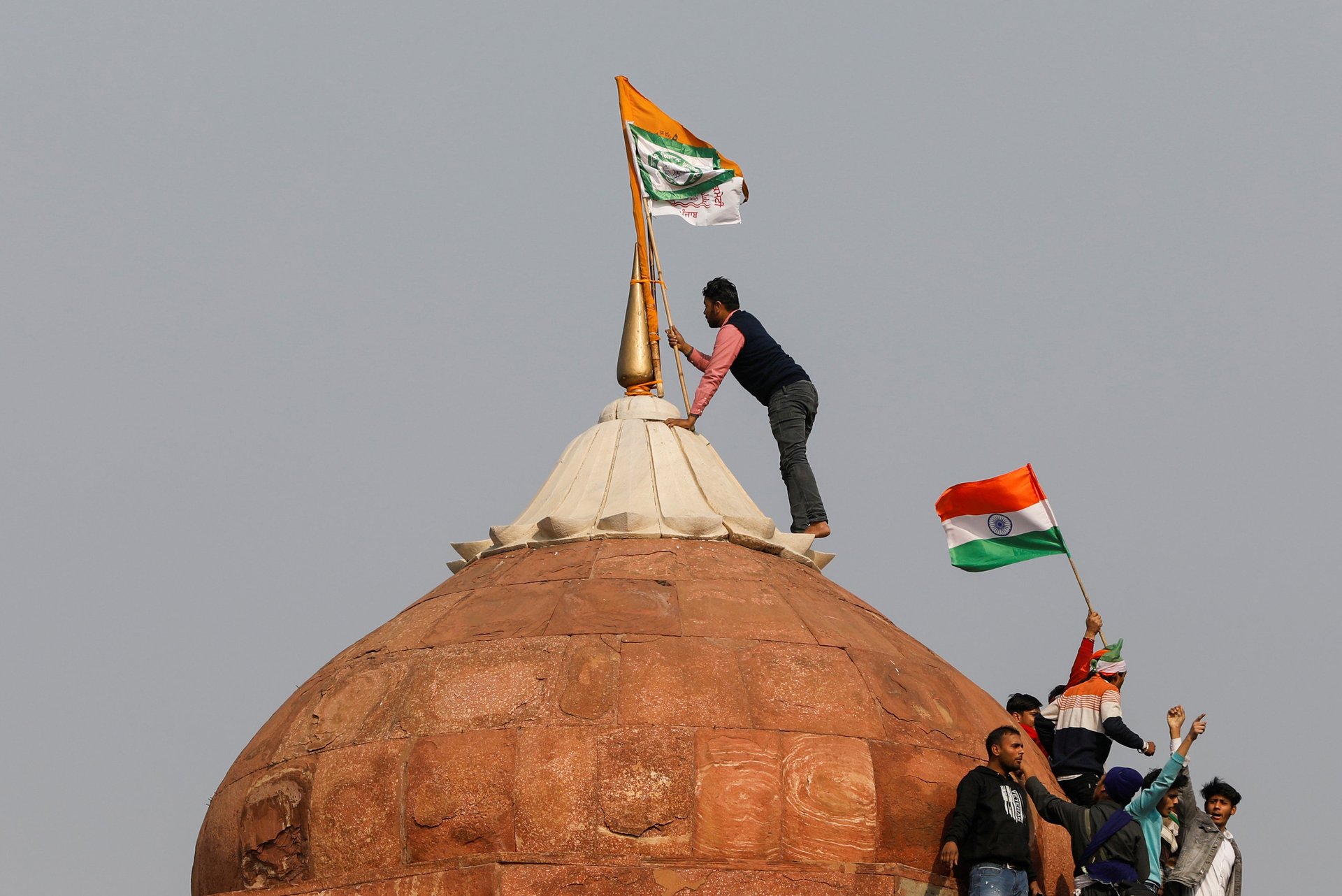
The leaders of Samyukt Kisan Morcha (SKM), an amalgam of the protesting farm unions, disassociates itself from the violence and claims “anti-social elements” infiltrated the rally. Following the clashes between the protesting farmers and the police, Amarinder Singh, chief minister of Punjab, urges farmers to leave Delhi and return. He emphasises that “genuine farmers” were not involved in the violence.
Jan. 27: SKM downplays the withdrawal of the support from the two unions, stating that these organisations were not part of the umbrella body and declares that the protest against the three contentious farm laws would continue till they are repealed.
Delhi police file 22 FIRs against farmer leader Rakesh Tikait and others in connection to the violence on Republic Day.
Jan. 28: The leaders of the protesting unions call off their march to the parliament on Feb. 1. A couple of farm unions from Uttar Pradesh—Bharatiya Kisan Union (Bhanu) and Rashtriya Kisan Mazdoor Sangathan—end their protest and dissociate themselves from the agitation.
Jan. 29: Social activist Anna Hazare announces an indefinite fast at his hometown in Maharashtra’s Ahmednagar from Jan. 30.
Bhartiya Kisan Union’s Tikait fraction announces to move to the supreme court against the attempt to evict the protestors from the Delhi-Ghazipur border protesting site.
